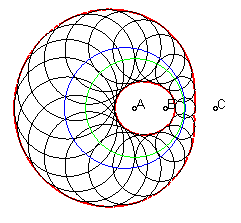If
and a cyclic generation stems from the circle with centre
O and radius R as the initial curve, the circle with centre
A(a,0) and radius
as inversion circle, and inversion power p.
In the frame (A,
,
):
Cartesian equation:
.
Polar equation: .
